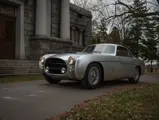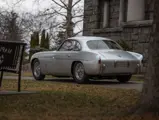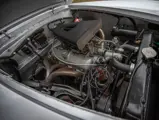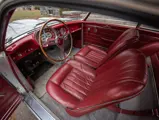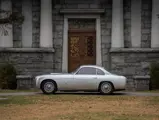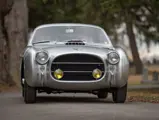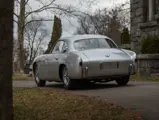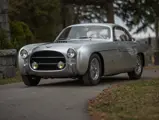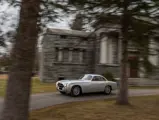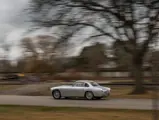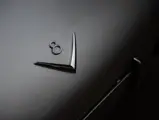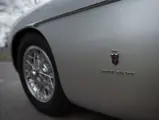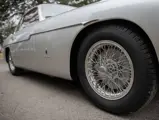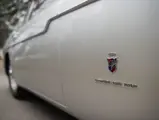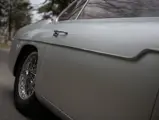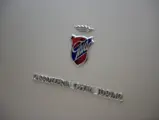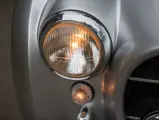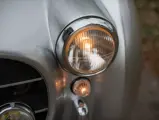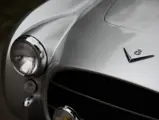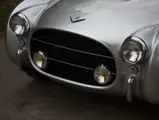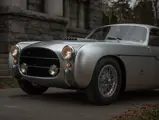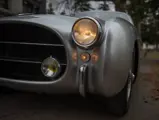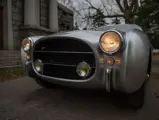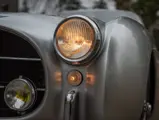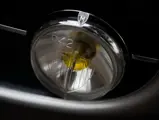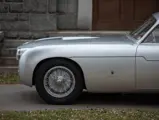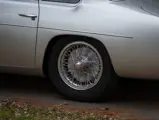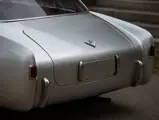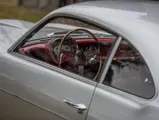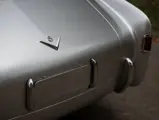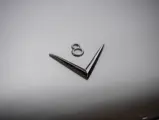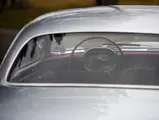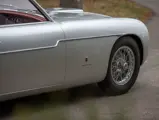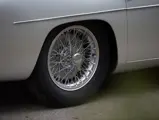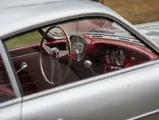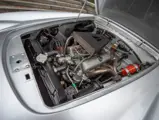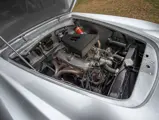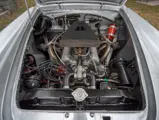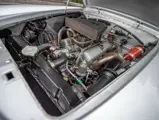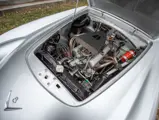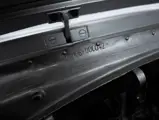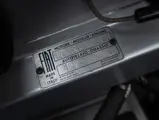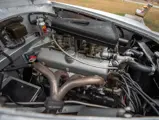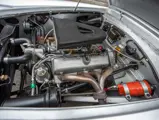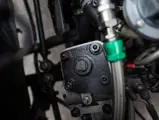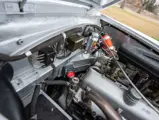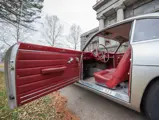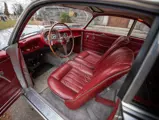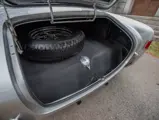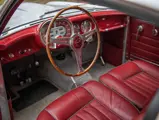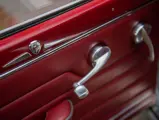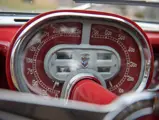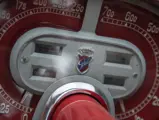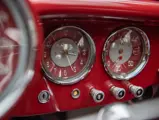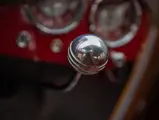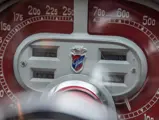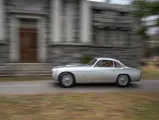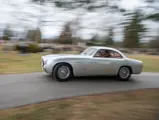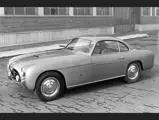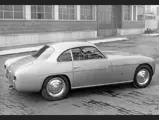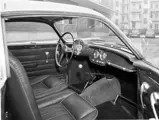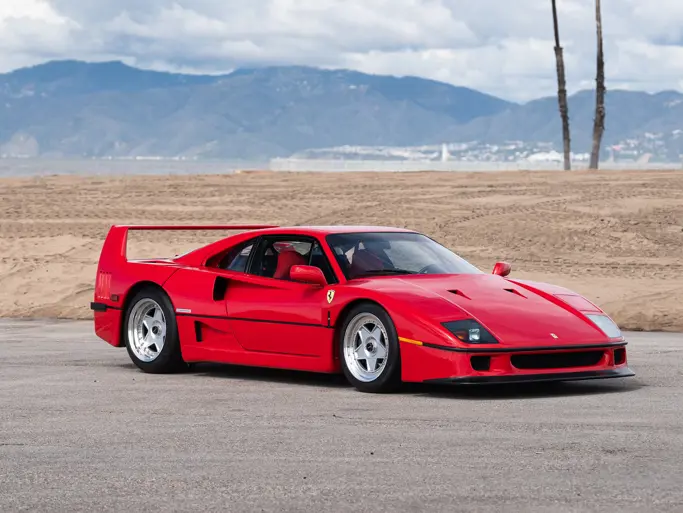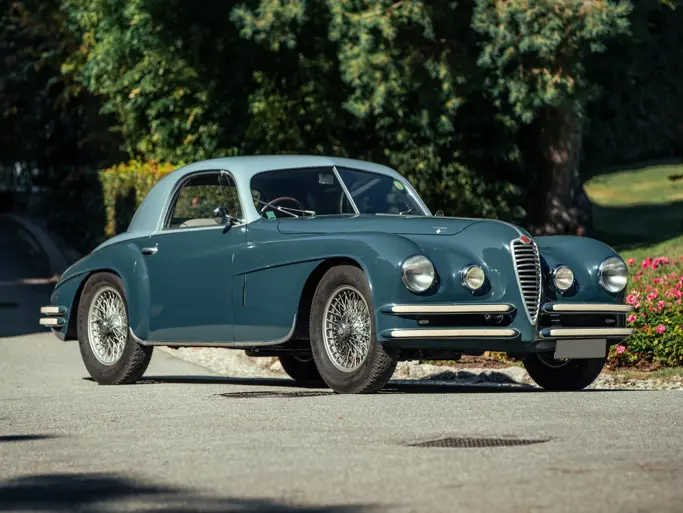Arizona 2023
1953 Fiat 8V Coupe by Ghia
{{lr.item.text}}
$1,105,000 USD | Sold
 | Phoenix, Arizona
| Phoenix, Arizona
{{internetCurrentBid}}
{{internetTimeLeft}}

- An exquisitely presented one-of-a-kind example of Fiat’s celebrated postwar performance jewel
- Unique one-off aluminum alloy coachwork designed by Virgil Exner and Felice Mario Boano
- One of fifteen 8V chassis distributed to Ghia and the only one not completed as a Supersonic
- Established ownership history dating to 1957; meticulously restored over the 1990s and early 2000s; successfully completed the California Mille
- Exhibited at the most exclusive shows, including The Quail, A Motorsports Gathering, the Villa d’Este Concorso d’Eleganza, and two appearances at the Pebble Beach Concours d’Elegance
- Desirably documented with Italian Car Registry entry, former classified ads and auction catalogue entries, prior bills of sale and title, former owners’ correspondence, technical schematics, and high-resolution period Ghia publicity photos
ANATOMY OF A JEWEL
A diamond that emerged from a figurative coalmine, the Fiat 8V was a shocking anomaly for a mass-market manufacturer better known for pedestrian models like the diminutive Topolino or the 500. Upon its introduction in 1952, Road & Track magazine described the jewel-like 8V as “the biggest surprise of the year.” It was understandably a shock to the automotive world that, after decades of producing entry-level models, Fiat would suddenly introduce a boutique-production sports car featuring an advanced overhead-valve light alloy V-8 engine, Siata-fabricated chassis, and four-wheel independent suspension.
The Otto Vu, as it was known in Italian, went on to be successfully campaigned by racing privateers all over the world, notably finishing fifth in class at the 1952 Mille Miglia, third in class at the Giro della Toscana, and becoming the eventual 2.0-liter champion in the Italian Sports Car Championship. A majority of the competition 8V examples were bodied in lightweight coachwork by Zagato produced in two discreet series, an arrangement that was no doubt precipitated by Elio Zagato’s success in racing one of the earliest examples. The Zagato-bodied cars shared the general proportions of the factory coachwork, a sublime design penned by Fabio Lucio Rapi.
Two other coachbuilders were responsible for clothing double-digit batches of the 8V, as Vignale built at least 10 examples, and Ghia built 15 cars, ranging between chassis numbers 000035 and 000056. All but one of these cars wore the Giovanni Savonuzzi-designed Supersonic coachwork. The lone exception, the featured lot, was clothed in one-off aluminum coachwork attributed to Chrysler design boss Virgil Exner, though undoubtedly with significant input from company principal Felice Mario Boano, who was soon to exit Ghia to found his own eponymous design concern.
ONE OF ONE
According to Tony Adriaensens’ authoritative book Otto Vu, chassis number 000042 was dispatched for the Ghia plant as a rolling chassis in June 1953, occurring about halfway through the sequential and chronological output of chassis to the Turinese coachbuilder. It is not entirely clear what prompted the company to mount the chassis with a different design than the Supersonic, but it is easy to discern the coachwork’s relation to any number of cars that constituted the Italian-American design partnership, including Chrysler models such as the K-310 and d’Elegance concept cars, and the GS1; as well as roughly concurrent Ghia design projects for other manufacturers such as the Alfa Romeo 1900C Supergioiello and the Ghia Cadillac.
As attested by period photos from the Ghia archives of the Ford Motor Company, 000042’s coachwork was graced with characteristically thin protruding fenders that framed inset headlamps, and a wide elliptical mouth grille adorned with two crossbars and foglamps. A decorative beltline gave way to a fastback tail surrounded by delicate tailfins, not unlike Savonuzzi’s Supersonic. The interior also showed special consideration, with leather upholstered seats and a driver-focused instrument panel dominated by a large binnacle housing a symmetrically facing half-moon speedometer and tachometer.
According to a deep file of research by the collection manager of a former owner, bolstered by period advertisements from Road & Track; period auction catalogues; prior bills of sale and titles; former owner’s correspondence; and the research of John De Boer’s Italian Car Registry, the 8V was imported to the United States circa 1957 by a director or actor in Los Angeles, California. Advertised for sale in August 1957 by a Mrs. Weber of Downey, California, the car passed in 1958 to Charles Trammel of Culver City, who reportedly stored the car for the following 10 years.
The Fiat was next acquired in 1968 by Dr. Lynn Gill of Palos Verdes Estates, although a divorce settlement prompted him to offer the 8V in September 1973, and he eventually sold the car at auction in May 1976 to Rick Cole of Marina Del Rey, the budding auctioneer. By this time the car’s original engine, number 000067, had been replaced with a proper 8V engine stamped with BS099 (reflecting that it was part of the 8V engine allotment sold to Siata for use in 208 S production). The car’s nose was also reconfigured with a more standard period look that included bulbous fenders with integrated headlamps, and an eggcrate grille. The alloy coachwork had been painted from its original light shade to rosso, the seats were reupholstered in matching red leather, and the original disc wheel covers were removed to expose the attractive wire wheels that lay beneath.
During the ensuing decade, 000042 was sold to Tony Clarkson of Brewster, New York, before being acquired in April 1987 by 8V expert Tony Krivanek, who in turn sold the car to Larry Harvey and commenced a restoration that was part of the transaction. Before the work could be completed, Harvey decided to the sell the car, and buyer Paul Forbes of Redondo Beach, California, assumed the remainder of the refurbishment, for which the Italian car expert Tony Nicosia was retained. Steve Beckman was entrusted to conduct body corrections as needed and to refinish the coachwork. The quality of the restoration was recognized when Forbes presented the car at the 2002 Pebble Beach Concours d’Elegance.
Mr. Forbes later sold the Fiat and in 2005 it was purchased by David Kelley of Woodside, California, and he presented the car at the 2005 The Quail, A Motorsports Gathering before driving it in the 2006 California Mille. In 2007, Kelley sold the Otto Vu to a collector based in Belgium, who exhibited the car a year later at the ultra-exclusive Villa d’Este Concorso d’Eleganza where it garnered a class award, and the Paleis Het Loo concours d’elegance before offering it at RM Auctions’ London sale in September 2009.
The 8V was purchased there by one of the most respected collectors in the United States, who presented the coupe at the 2010 Pebble Beach Concours d’Elegance, eventually selling it at RM Sotheby’s Arizona sale in January 2014 to the current owner. Under the consignor’s ownership, the coupe was notably accepted for participation in the Colorado Grand, generally recognized as the most exclusive touring event in the United States.
In addition to being one of 114 total 8V examples built, and one of just 15 completed by Ghia, this unique 8V carries the unusual distinction of wearing one-off Ghia coachwork that distinguishes it from every other example. Characterized by the unmistakable design cues of Virgil Exner and Felice Mario Boano, and the veteran of an impeccable concours record, this truly unique Ghia is poised for further concours exhibition or driving enjoyment, being eligible for ultra-exclusive tours like the Mille Miglia Storica and the Colorado Grand. It would make a singular addition to any collection, particularly suitable for enthusiasts of the groundbreaking Italian-American concept cars of the 1950s.

